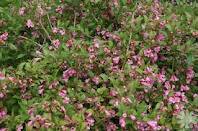Phellodendron
Pot Cultivation
The Cork Trees will flourish in loamy soil, though will grow in any good soil. They need to be exposed to full sun. Older trees rarely need pruning, but young trees will need to be trained to develop one trunk. Pruning should be done in the winter.Propagation
Seeds can be sown in light sandy soil. The outer, fleshy pulp should be washed from the seed before planting. If they are sown in the fall, they should be planted in a cold frame or some sheltered spot outdoors. They can also be sown in January or February in a greenhouse. When they are large enough to handle, they can be transplanted to a nursery border. |
P. Lavallei |
VARIETIES
- P. amurense;
- P. sachalinense;
- P. Lavallei;
- P. chinense;
- P. japonicum.




